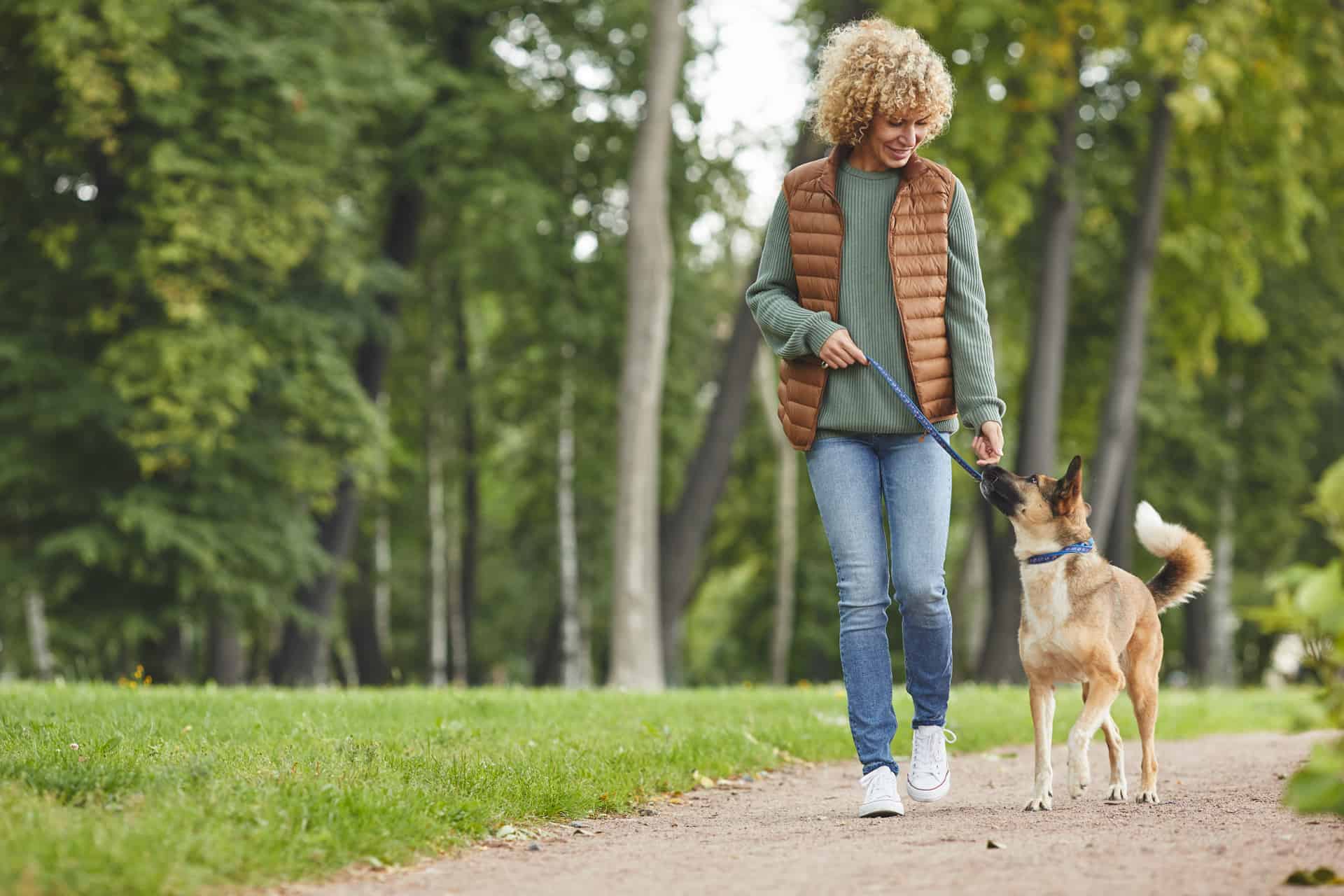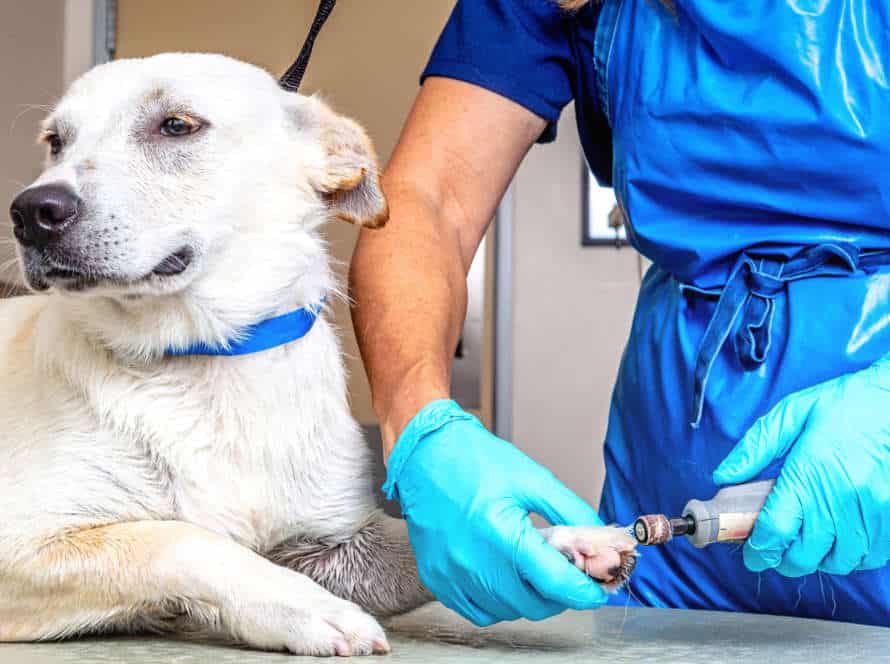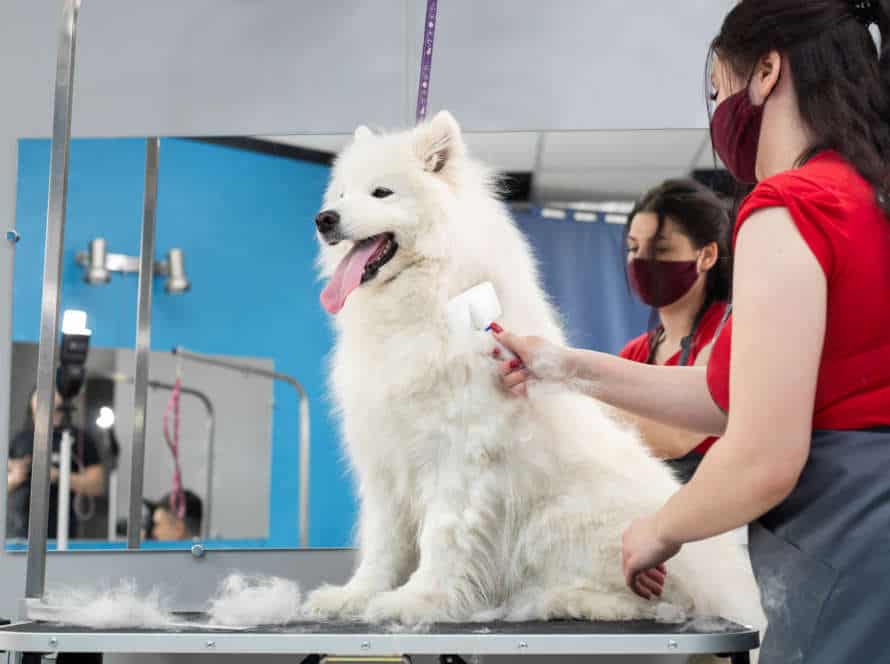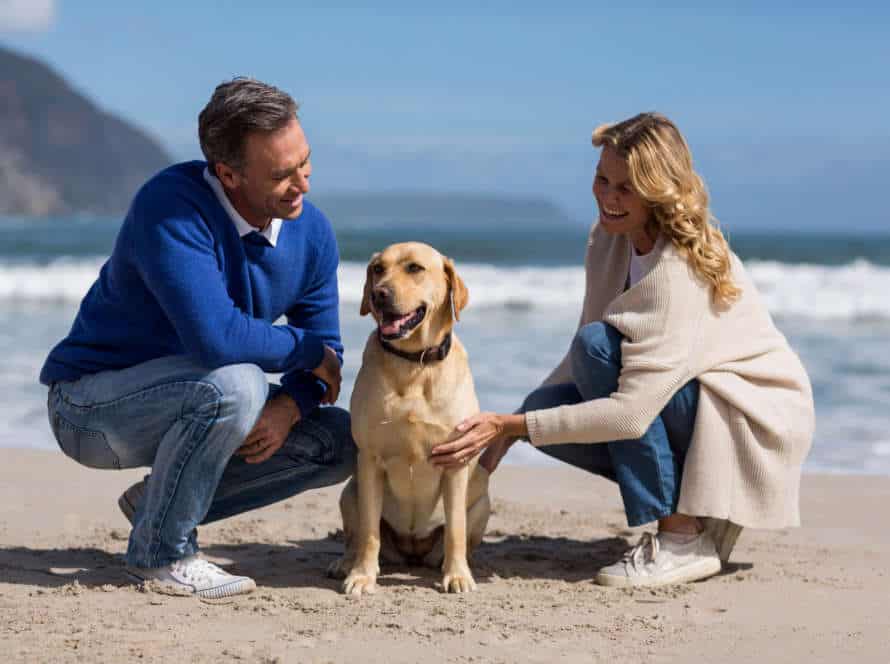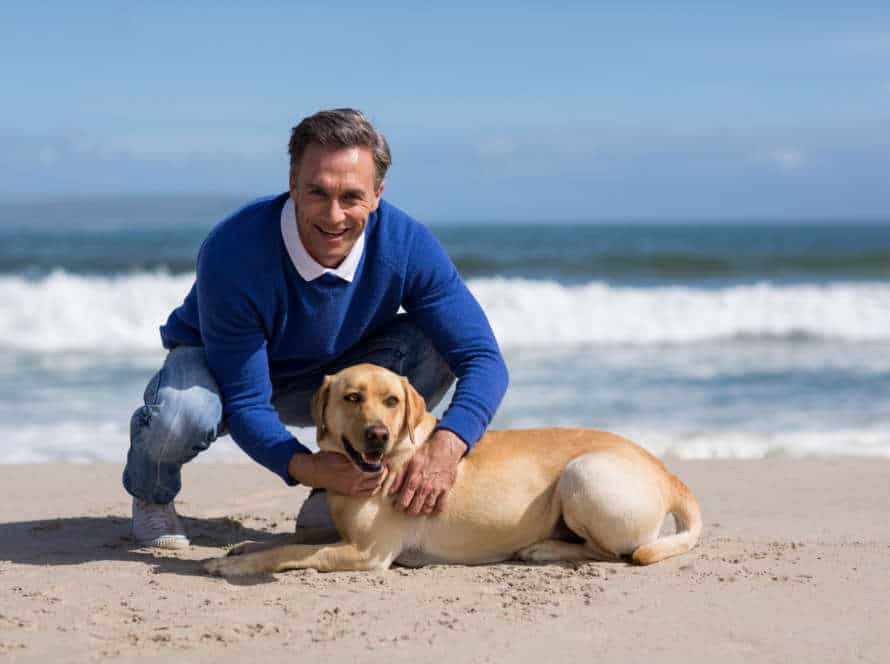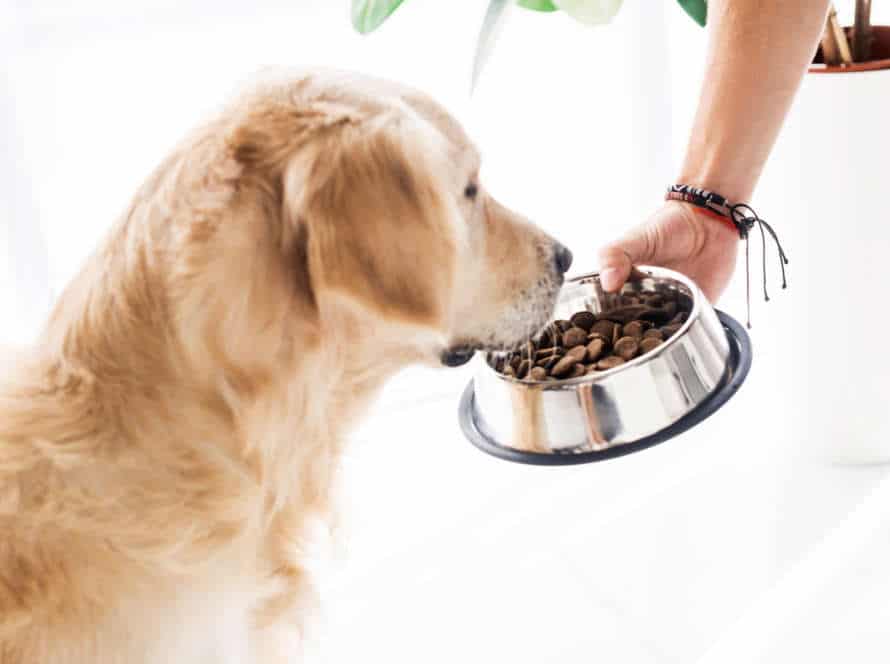Exercise: The Key to a Happy, Healthy Dog
Exercise is super important for keeping your pup happy and healthy! A daily physical activity plan helps stop boredom, stress, depression, and obesity in dogs. Here are the benefits of regular exercise for doggos:
- Physical Fitness: Exercise improves their strength, flexibility, and endurance. It keeps their weight in check and boosts cardiovascular health. It also helps with muscle and bone health.
- Mental Health: Exercise makes their brain work better, reduces anxiety and stress, and boosts cognitive function. It also stops depression and destructive behavior.
- Socialization: Exercise helps doggos make friends with other dogs and humans. This socializing decreases aggression, anxiety, and fear of new things.
It’s important to choose the right type and amount of exercise based on your pup’s breed, age, size, and health needs. Ask your vet for advice.
Pro tip: Make sure your dog stays hydrated during exercise and don’t push them too hard in hot weather.
The Importance of Exercise for Your Dog’s Health
Exercise is essential for a healthy and content pup. It keeps them active and stops boredom from setting in, which could lead to naughty behaviour. Plus, exercising together builds a strong bond between you and your furry pal. Let’s learn why exercise is so important and how to make sure they have enough of it.
Exercise Promotes Physical Health and Helps with Obesity
Exercise is vital for a pooch’s physical health and to avoid obesity. It helps them keep a good weight, build muscle mass, and strengthen immunity. Here’s why:
- Reduces risk of obesity: Exercise helps burn calories & keep the right body weight, avoiding obesity & related issues.
- Builds muscle: It helps build lean muscles, making them strong & agile.
- Boosts immunity: Improves blood circulation, providing nutrients & oxygen to the body, strengthening immunity.
- Supports healthy aging: Older dogs exercising regularly have better mobility, balance, & brain function, aiding healthy aging.
It’s important to create a regular exercise routine, tailored to the breed, age, and activity levels of your dog, to keep them healthy & happy.
Exercise Promotes Mental Health and Helps with Behavior Issues
Exercise is essential for a pup’s mental health and behavior. Physical activity can help them let off energy, manage stress, and reduce anxiety and aggression. Here are some of the ways exercise impacts mental health:
- Oxygen flow to the brain increases, improving memory and cognitive function.
- Endorphins, hormones that bring happiness, are released.
- Confidence rises, fear and anxiety decrease.
- Socializing and interacting with other dogs and people can be positive.
Ensure physical and mental health by exercising your pup for at least 30 minutes daily. Playing fetch, going for walks and runs – it’s all great! Pro tip: Check with the vet before beginning an exercise program.
Exercise Helps Create a Bond Between You and Your Dog
Exercising with your pup can be lots of fun and a great way to build your connection! Plus, it helps with their overall health and behaviour. Here’s why it matters:
- Health: Exercise keeps your dog’s muscles strong and their heart healthy. Also, it stops them from getting too fat or having joint troubles.
- Behaviour: If your pup doesn’t get enough exercise, they can become naughty and have issues. Taking a walk or jog together helps keep this in check.
- Bonding: Exercise is a fab way to bond with your pup. It gives you both a chance to socialise, cements your bond and offers mental stimulation.
So, the next time you put on your sneakers, take your furry pal for a run. Both of you will enjoy the exercise and the wonderful bond it creates!
Types of Exercise for Dogs
Exercise can do wonders for humans, and pups too! Make sure your pup stays active, alert, and healthy. It’s essential to know what type of activities are beneficial for them. Let’s explore the best types of exercise for dogs!
Walking and Hiking
Walking and hiking are awesome exercises for dogs. They bring physical and mental health benefits. Walking is low-impact, so it strengthens heart health, digestion, muscles, and helps with better sleep. Plus, walks expose dogs to new things, like sights, sounds, and smells. Hiking is more of a challenge. It increases a dog’s endurance, balance, and coordination. When picking exercise for your pup, consider their age, breed, and fitness level. Talk to your vet first to make sure it’s safe and healthy.
Running and Jogging
Running/jogging is a great exercise for dogs, giving them physical and mental health benefits. It’s important to determine the best approach for your pup and ensure their safety.
Two main types of running/jogging exist; short distance and long-distance. Short distance runs are best for inexperienced dogs, who may overheat or tire quickly. Alternate between walking and running, increasing the distance and speed gradually.
Long-distance running is best for experienced dogs, with built-up stamina. Monitor your pup’s breathing rate, hydration and condition. This will help to avoid injury and manage fatigue.
Overall, running/jogging has many benefits; weight management, cardiovascular fitness and stress relief. Check with your vet and take precautions to keep your pup safe and comfortable while exercising.
Swimming and Water Sports
Swimming and water sports are great for dogs! It’s a low-impact exercise that’s gentle on joints and muscles. Plus, it can boost cardiovascular health, strengthen core and back muscles, and increase endurance.
Dock diving, paddleboarding, and surfing are additional fun activities that provide mental stimulation.
Pro Tip: Supervise your pup while they swim. Start with shallow water and use positive reinforcement to make them feel comfy. Don’t forget a life jacket if needed!
How to Incorporate Exercise into Your Dog’s Daily Routine
Exercising is a must for your pup’s joy and health. It helps maintain their physical and mental wellbeing, keeps stress low and helps to avoid behavior issues. Incorporating exercise into your dog’s daily schedule doesn’t have to be hard or take a lot of time. Learn how easy it is to make exercise part of your pooch’s routine!
Setting Realistic Exercise Goals Based on Your Dog’s Age, Breed, and Size
To keep your pup fit and safe, it’s essential to set realistic exercise goals based on their age, breed and size. If you don’t, there could be health issues, injuries or undesired behaviours. Here are a few tips:
- Age: Adapt your routine as your dog grows. Younger dogs will need more playtime, whilst older pups may need less to prevent exhaustion.
- Breed: Different breeds have different needs. Pups like Border Collies will require more exercise than low-energy breeds like Bulldogs.
- Size: Dogs come in different sizes, and their physical abilities differ too. Bigger dogs can handle more vigorous exercise than smaller ones.
Remember to observe your dog’s signals of fatigue or pain during exercise and adjust the intensity and duration as needed.
Pro Tip: Exercise isn’t just good for physical health, but mental health too. Playtime and exercise can reduce worries, depression and lift their spirits, leading to a joyful, healthy pup.
Using Interactive Toys and Playtime to Encourage Activity
Interactive toys and playtime are great ways to get your pup active! Use them in their daily routine to keep them healthy and energetic. Here’s how:
- Get toys that need movement, like balls, frisbees, or tug-of-war ropes.
- Hide treats or kibble for hide-and-seek.
- Make a backyard obstacle course with tunnels and jumps.
- Give mentally stimulating toys, like puzzles or treat dispensers.
Exercise and activity are vital for a happy, healthy pup. Interactive toys and playtime help keep them at a healthy weight, and their mind sharp!
Creating a Consistent Exercise Schedule and Sticking to It
For both pooches and their owners to stay in shape, it’s vital to construct a regular exercise plan. Here’s how to integrate activity into your pup’s everyday life:
- Comprehend your pup’s exercise requirements based on age, breed, and size.
- Organize your exercise routine around your dog’s day-to-day timetable. Bit by bit, up the intensity and duration of the activity.
- Incorporate multiple types of exercise such as walking, jogging, and playing fetch.
- Be steadfast with the exercise routine, setting aside a particular time every day for the activity.
- Ensure to provide enough water and ample time for rest during and after exercise.
Regular exercise can stop behavioural issues in dogs and keep them fit.
Pro tip- Employ positive reinforcement techniques like treats and verbal encouragement to spur your pup during exercise.
How Lack of Exercise Can Negatively Affect Your Dog
Exercise is a must for pup health, body and mind. Without enough physical and mental stimulation, boredom, anxiety and other issues can arise. This can result in bad behaviour. Let’s look at how lack of exercise can be bad for your pup.
Behavioral Issues and Aggression
Behavioral issues and aggression in dogs can be caused by not enough exercise. It’s the key to a happy and healthy pooch! Why?
Exercise helps regulate a pup’s energy, mood, and physical health. Without it, your dog can become bored, fidgety, and wreck things. Resulting in barking, digging, and chewing. Plus, aggression towards other canines or people.
Regular exercise also helps avoid obesity, heart disease, and other health issues.
To keep behavioral issues and aggression away, make sure to give your dog plenty of exercise and playtime. A daily walk, jog, or game of fetch can do wonders for your pup. Pro Tip: To make exercise more effective, mix up the activities and locations.
Obesity and Diet-Related Health Issues
Obesity and related health issues are getting more common for Americans – and this includes our furry pals. A lack of exercise for dogs may result in negative health effects and lower their quality of life. Exercise is important to keep a healthy weight and lessen the risk of canine obesity, diabetes, heart disease, and arthritis.
Here are some negative impacts of a lack of exercise on your dog:
- Weight gain and obesity
- Joint pain and mobility problems
- Mood changes and anxiety
- Digestive issues
- Lower stamina and endurance during physical activities
Therefore, it is necessary to set up regular exercise routines for your dog to keep them healthy, content, and long-living.
Joint Problems and Decreased Mobility
Exercise is essential for a dog’s health. Without it, their muscles become weak and their joints suffer. This can result in inflammation, pain, and even arthritis.
It’s important to give your pup exercise tailored to their breed, age, and activity level. Daily walks, runs, and playtime help keep their muscles and joints healthy.
Joint supplements and pain medication can help dogs with joint problems, but these should be used alongside regular exercise for the best results.
Give your pup regular exercise – it will improve their mobility, reduce the risk of joint problems, and give them a happy and healthy life.
Additional Tips for Keeping Your Dog Happy and Healthy Through Exercise
Exercise is a paw-sitively great way to keep your dog healthy. It boosts energy levels and decreases aggressive, destructive behavior. Plus, it helps with weight management and builds strong muscles and bones.
Here are some additional tips on how to keep your pup happy and healthy with exercise:
Keeping Your Dog Safe During Exercise
Exercising with your pup is a must for their health and happiness. But there are certain precautions to take. Here are some tips:
- Consult with the vet first. Make sure your dog is fit for exercise and there’s no underlying health issue that could be made worse.
- Choose the coolest part of the day to work out.
- Keep your pup on a leash outside. Prevents them from running away, meeting dangerous animals, or getting lost.
- Use positive reinforcement techniques to keep them motivated, not overexerted.
- Give them plenty of water during and after. And avoid feeding an hour before and after exercise.
- Pace the routine to build endurance gradually.
- Factor in rest periods to avoid physical exhaustion and mental fatigue. Pro Tip: Start with short and easy exercises. Then increase the intensity and duration.
Building Up Endurance with Gradual Increase in Activity
If you want your pup to stay happy and healthy, increasing activity gradually is key. Here are some tips:
- Start slow. Begin with a daily walk, or a light jog around the block. Increase intensity and duration each week.
- Mix it up. Switch between running, hiking, swimming and playing fetch.
- Stay hydrated. Bring water and offer frequent water breaks. In hot weather, rest and rehydrate more often.
- Watch for signs of fatigue. Heavily panting, lethargy and refusal to keep going? Time to take a break!
Gradual increase helps build endurance without injury. Result? Healthier and more energetic pup!
Hiring a Professional Dog Walker or Trainer for Additional Support
Hire a pro dog walker/trainer to make your pup happy & healthy. Here are some tips to keep ’em fit:
- Create a daily routine – Walk/run your pup at the same time each day.
- Incorporate playtime – Fetch, tug-of-war or take them to a dog park.
- Provide mental stimulation – Hide treats, give ’em puzzle toys.
- Take into account age & health – Exercise must fit pup’s age, size & physical ability.
- Monitor behavior – Check for signs of discomfort, fatigue or aggression.
Pro tip: Exercise not only keeps ’em healthy, but reduces anxiety & destructive behavior.
Frequently Asked Questions
1. Why is exercise so important for my dog?
Exercise is important because it helps maintain a healthy weight, strengthens muscles, improves cardiovascular health, and reduces anxiety and destructive behavior.
2. How often should I exercise my dog?
This depends on your dog’s breed, age, and overall health. Generally, dogs should get at least 30 minutes to 2 hours of exercise everyday.
3. What are some good types of exercise for dogs?
Some good types of exercise include walking, running, swimming, playing fetch, and agility training.
4. What are the signs that my dog is getting enough exercise?
Signs that your dog is getting enough exercise include a healthy weight, having plenty of energy, and being calm and relaxed when indoors.
5. How do I make sure my dog gets enough exercise during bad weather?
You can provide indoor activities such as playing games like hide and seek or practicing basic obedience commands. You can also invest in indoor exercise equipment, such as a treadmill specifically made for dogs.
6. Can my dog exercise too much?
Yes, this is possible. Overexertion can lead to injury, exhaustion, or dehydration. It’s important to monitor your dog’s activity levels and provide breaks and water as needed.

